Nary a soul reading this couldn't benefit from an additional 10 pounds of lean muscle. It's also likely that you've tried programs offering similar promises, with mixed results. Some of these miracle workouts like to go back to basics, while others are more cutting-edge.
This approach falls somewhere in between, combining a dogged reliance on proven, foundational exercises with new scientific perspectives on muscle recovery. In other words, you'll still break down plenty of muscle via the bench and squat, but you'll greatly amplify your body's ability to come back bigger and stronger.
Your 10-pound prize is awarded via dependence on two key facts: overcompensation and the difference in recovery between muscle groups.
THE KEYS TO UNLOCKING GROWTH
"Overcompensation" refers to the period of time following a workout during which your body has an increased capacity to grow. This window falls somewhere between one and five days after a training session. In other words, for a brief, precise amount of time, the muscle is actually bigger, stronger, and much more able to grow than when it was trained, despite what your aching muscle bellies might be telling you.
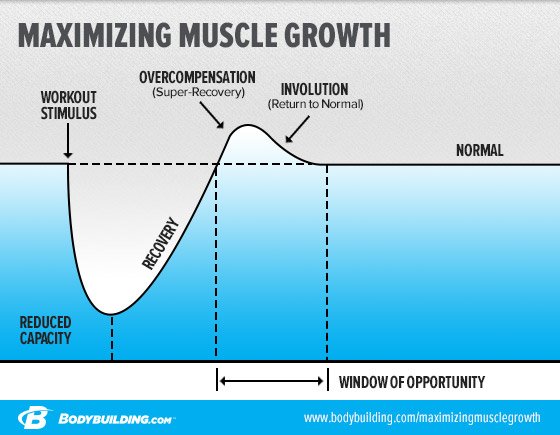
This phase of the recovery cycle is ignored at great peril to your gains; if the muscle fails to receive additional stimulus during this time, overcompensation gives way to "involution," which is basically a return to normal. An additional session during this phase, then, leads to what I call "super-recovery" and is the cornerstone of growth. This takes a great toll on the body, of course, which is why this is a single eight-week program. But proper rest, nutrition and supplementation can absolutely help you maximize the return on your physical investment.
A common misconception is that all muscle groups recover at the same rate between workouts. Hence the majority of past training programs have always treated each and every muscle on your body exactly the same. This is a big mistake.
Providing the same amount of training to each muscle, at the same intervals, is like feeding an elephant and a mouse the same amount of food and expecting similar results. For example, training your legs every other day would severely overtrain them, while training your biceps once a week would leave them seriously undertrained. The muscle sizes and types differ too greatly to have their recovery picture painted with a broad brushstroke.
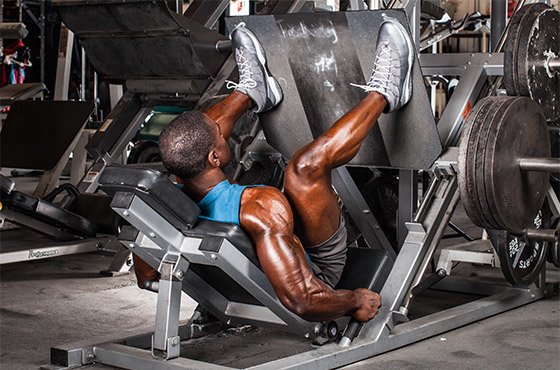
For instance, training your legs with zeal can have a drastic impact on the rest of your body, not just because they add proportion to your physique but also because these large muscles can greatly govern how many calories you're able to burn at rest. But that training places great neurological and physical demands on your body, and longer recovery should be expected. Arms, delts and lats, on the other hand, can be hit more frequently, provided you temper the volume and intensity per session.
Put plainly, smaller muscle groups (everything but legs) recover much, much faster than other muscle groups.
FILLING IN THE GAPS
By training muscle groups repeatedly throughout the week, your body will be in a constant state of repair. This growth-primed environment can be capitalized upon both from within and from without.
Hormones: As you may already know, higher levels of testosterone and growth hormone (GH) lead to increased protein synthesis in muscles, making them bigger and stronger in the process. So, in concert with the right stimulus, additional levels of these key hormones can really help speed you toward that 10-pound gain. A study in the "Journal of Applied Physiology" found that a weight-training regimen consisting of high repetitions (10) combined with a high number of sets (10) and a limited amount of rest in between sets per body part produced a 67-percent elevation in testosterone and a 25-fold increase in growth hormone. This means that your heaviest sets should be preceded by rest periods of no longer than 2-3 minutes for a proper hormonal response. Smaller muscle groups can do with 60 seconds or less.
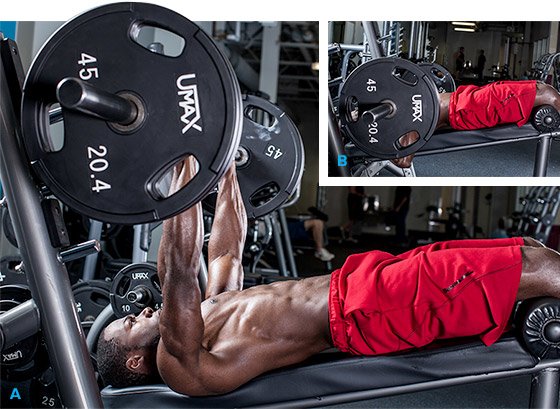
Bench Press
Fiber Types: The first chapter of any book on training will go into great detail on muscle fiber types and their effect on performance and aesthetics. The Cliffs Notes read: Type II fibers are most responsible for growth. That's why your program for eight weeks should primarily target these muscles. Compound lifts such as bench presses, overhead presses, squats, and rows done in the range of 6-10 reps are, as ever, the basis for growth, as they recruit the most Type II fibers and elicit the greatest release of T and GH. These exercises will remain the basis of your workouts—no need to fix what isn't broken. But don't go overlooking the Type I set.
The key to triggering new muscle growth and all-over size is to work both types of muscle fibers hard enough to cause them both to break down and rebuild. Using a higher rep scheme with lighter weights (12-20 reps) will break down the Type I fibers, so they grow larger—perhaps not to the extent of the more anaerobic Type IIs but still, bigger Type I fibers contribute to larger, denser muscles.
Ideally, you will alternate between higher-rep and lower-rep days to allow for greater total recruitment and recovery. Your "light" workouts should include high-rep days (anywhere from 12-20 reps for no more than 3-4 sets) and low-rep days (6-12 reps for no more than 4-5 sets).
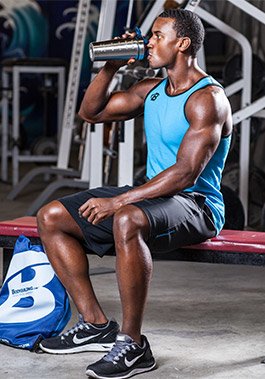
Supplementation: No real departure from the usual supplementation recommendations here, save for one: the inclusion of bioactive peptides.
You see, while whey and casein are critical to protein synthesis post-workout and during sleep, bioactive peptides can bolster their impact. Darryn Willoughby, PhD, head of the human performance lab at Baylor University, has said that bioactive peptides are like "fertilizer for your muscles" in that they can help muscles grow faster than they can through normal care. Normal, in this case, refers to the long-held practice of having whey pre-workout, a whey-and-casein blend post-workout, and casein at bedtime.
Bio-active peptides are an entirely new category of supplements. Basically, peptides are growth factors, extracted from colostrum protein designed to maximize the body's ability to synthesize protein. You can build muscle bigger, faster, or stronger, depending on your training goals. Bioactive peptides amplify the signal sent out by amino-starved muscles and accelerate the rate of protein synthesis, allowing you to develop muscle faster. And, in a program where you're training more often and recovery is paramount, this becomes even more important.
By using bioactive peptides, you should notice a marked reduction in recovery time after bouts of intense exercise or weight-training. Within 2-3 weeks, you will undoubtedly notice an increase in your strength, as long as you are training hard and heavy. And with continued use of bioactive peptides, you can develop lean body mass at a faster rate. Research shows that this rate can take hold in as little as four weeks.
RECOVERY PRO
So by taking advantage of your body's post-workout window of overcompensation and increasing your training frequency for most body parts, you simply create the best possible opportunity for your body to create 10 fresh pounds of sinew. Hitting a muscle group again before it has a chance to fully recover may sound counterintuitive but, if omitted, your muscles have a chance to return to stasis, which is a death knell for hypertrophy. And remember—biceps and pecs don't require the same week-long rest as your quads and hams. They recover much faster than you give them credit for and, after a few weeks of increased frequency, they'll respond in kind with plenty of new growth, not to mention an uncanny ability to take a licking and keep on ticking.
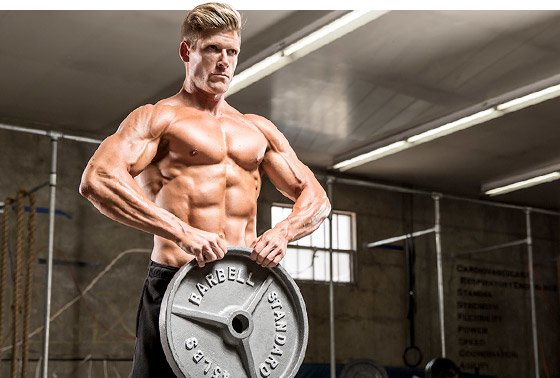
Add to that an increase in your body's most anabolic hormones and a sprinkling of bioactive peptides to exponentially increase your body's rate of protein synthesis, and you have the perfect solution for a 10-pound turnaround in eight weeks (or less).
YOUR VARIABLE SPLIT SCHEDULE
Weeks 1/3/5/7
Day 1: Chest, shoulders, arms, abs
Day 2: Rest
Day 3: Back, shoulders, arms
Day 4: Rest
Day 5: Chest, shoulders, arms, abs
Day 6: Legs
Day 7: Rest
Weeks 2/4/6/8
Day 1: Back, shoulders, arms
Day 2: Rest
Day 3: Chest, shoulders, arms, abs
Day 4: Rest
Day 5: Back, shoulders, arms
Day 6: Legs
Day 7: Rest
VARIABLE SPLIT WEIGHT TRAINING 101
Use these general guidelines to formulate your own customized workouts: no novel exercises required
Frequency
- 1 time per week for legs, 2 times per week for all other body parts
- Since legs take the longest to recover, it's best to hit them once and hit them hard. Complete recovery is preferential to training frequency for this large muscle group. All other muscle groups will benefit from increased training volume within the overcompensation window.
Rest
- Up to 2 minutes for legs, 30-60 seconds for all other body parts
- Proper recovery between sets is vitally important. In order to move the greatest weight loads possible for legs, take up to (but ideally less than) two minutes between sets. For all other body parts, keep rest periods to a minute or less, even if this necessitates modification of weight between sets.
Volume
- Quads, hams: 10-12 sets, 2-3 exercises per session
- Chest, back: 8-10 sets, 2 exercises per session
- Shoulders, biceps, triceps, calves, traps: 3-6 sets, 1-2 exercises per session
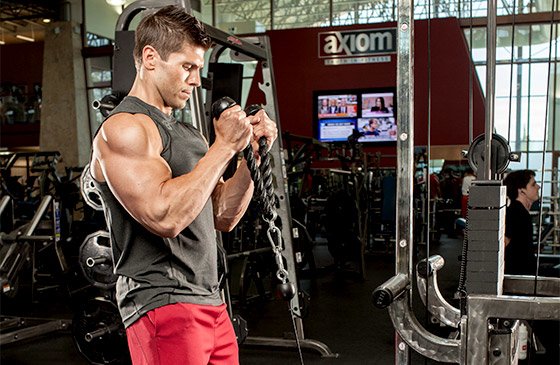
Intensity
Intensity progresses over the course of eight weeks. Some suggested progressions include:
- Week 1: Straight sets on most exercises.
- Week 2: Take the last set of every major exercise to failure, and have a spotter help you through two or more forced reps. Perform supersets for arms.
- Week 3-8: Alternate between heavy and light workouts for arms. In one workout, perform only one exercise, but use triple dropsets for biceps and triceps. In your next session, go back to straight sets on a basic move for 3-4 sets of 6-8 reps. Take the last set of every major exercise for larger muscle groups to failure and have a spotter help you through two or more forced reps.
Rep Range
- 6-20 reps
- In general, start each compound move with the heaviest weight you can handle for 6-10 reps, and add weight each successive set. Smaller muscle groups will be trained with sessions that alternate between heavier (~10RM) weight and lighter (~12-20RM) weight.
Duration
- 8 weeks
Recommended For You

Lose Your Last 10 Pounds - For Good!
Never diet again by incorporating these 10 can't-miss strategies for permanent weight loss.
10 Tips For A Successful Transformation
You're looking to transform, not evolve. You have time, but not forever. Follow these 10 tips and speed up your progress. Let's go!

